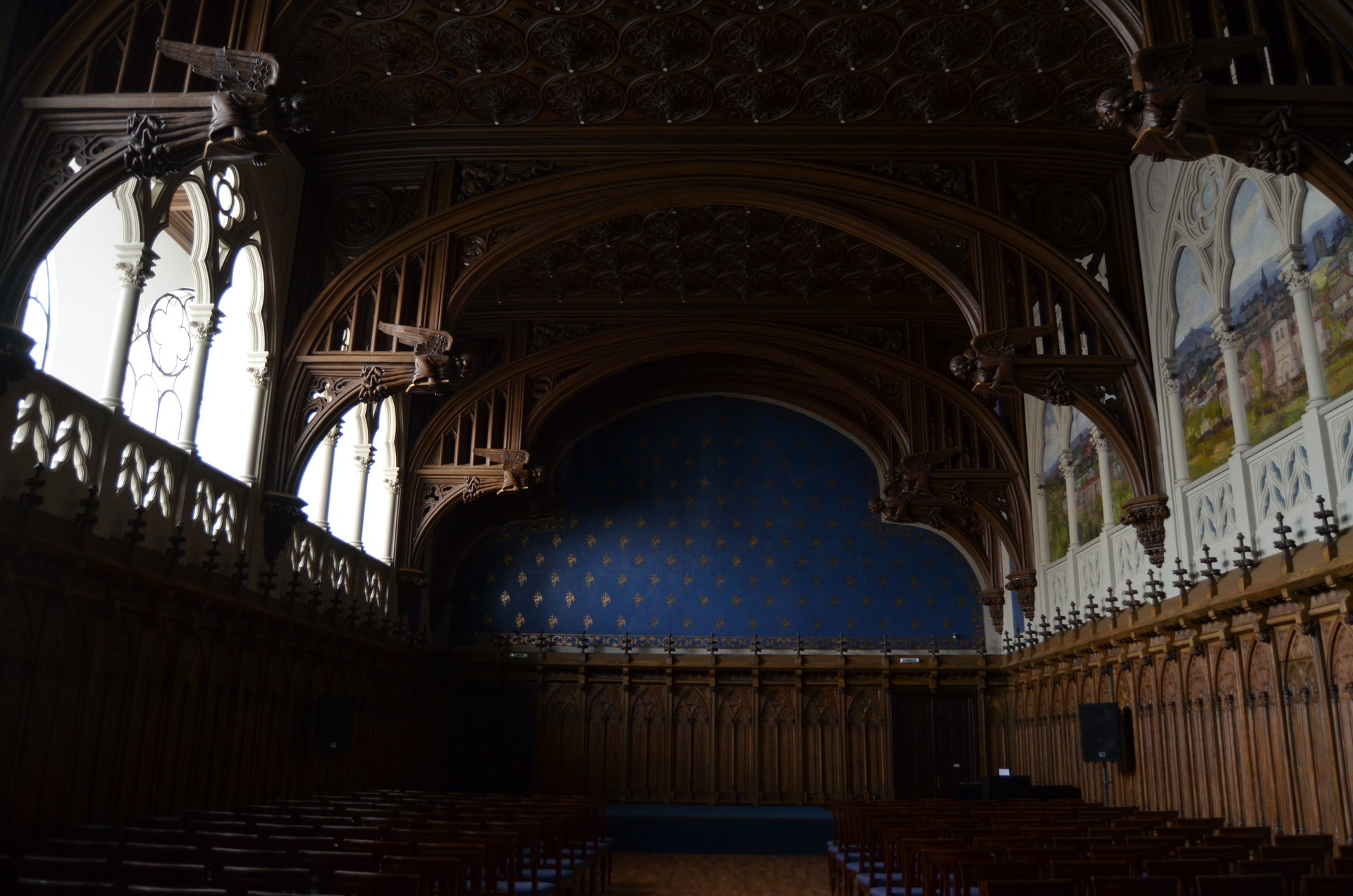Iași: The "Henri Coandă" and "I.D Berindei" impressive halls
The two impressive halls that people can visit in the palace of culture
After visiting The Ethnographic museum of Moldovia ( which you can read about in my previous article ) that is located in the Palace of Culture I continue my journey through the other rooms and galleries of the monument building. I am still on the first floor, where I find an impressive room called the “Henri Coandă” Hall, which back in the days, when the Palace of Justice was still in use, this large hall hosted the Jury Court.

The "Henri Coandă" Hall and its invention "bois-cement"
Later on, the room was renamed “Henri Coandă”, after the great Romanian Savant, Henri Coandă, the inventor of the jet engine airplane. Besides, he also had a contribution to the palace because Coandă drew up the blue prints for the interior decorations and invented a special construction material named "bois-cement".
The paneling that crowns the walls of the Jury Coat, the actual “Henri Coandă” Hall, was made not by using wood as it might seem at a first look, but rather by using this particular material that closely resembles oak wood.
The decorations of the hall
The ceiling decorations with the console system supported by the heraldic shield – carrying angels is of a British influence and were created after the sketches drawn by Emil Wilhelm August Beker, who at that time, was the official sculptor of the Romanian Royal House.
As I enter the “Henri Coandă” Hall, I remember of the Voivode’s Hall which I just saw earlier due to the blue color of the walls and which can be found on the upholstery of the chairs too.

The mural paintings representing the image of the city of Iasi
Even if the hall is quite large, the palace gives me a feeling of cosiness maybe because of the many little decoration details and of the light that illuminates the interior through the gothic white openings and windows.
Opposite to the rows of windows, the wall mimics the same layout of the windows of the left wall, however inside their openings is painted the landscape of the city of Iași in a triple perspective, more exactly, the historic, artistic and industrial city. I discover that, the mural is dating back in the 70’s when renowned artists of that period, such as Mihai Cămăruț, Dimitrie Gavrilean or Victor Mihăilescu-Craiu, were commissioned to create paintings.
I think what probably impresses me the most about this „Henri Coandă” Hall is the fact that the entire interior with all of its architectural, decorative and painting elements look brand new as if the hall had been built just yesterday and that’s due to the recent restoration works, the current aspect of the room being very similar to the initial one.
Moving forward to the "I.D Berindei" Hall
Another interesting hall that wants to show me that history part, when the building used to be The Palace of Justice is the “I.D. Berindei” Hall, a room which of course, bears the edifice architect’s name, Berindei being the one who designed and projected the complete Palace of Culture.

The reproduction of the former court law
Being inside the “I.D. Berindei” Hall I get the atmosphere of the court law because the room was actually reinstated to give an idea of how the interior appeared like in its initial design, thus, the furniture displayed here is the original one as well as the two magistrate’s dresses which belonged to one of the remarkable personalities who worked here within the Court of Appeal of Iași between the two World Wars.
The wall paneling made out of the "bois-cement"
Just like in the „Henri Coandă” Hall, here as well. I notice how the wall paneling was made of the material named “bois-cement”, the plaster which imitates the oak wood, its formula being based on chalk powder and natural wax mixed with other ingredients. For real now, if I had not read the information boards, I would have thought without ant doubt, that the wall paneling surrounding the whole room, is indeed made of same type of wood.


The original deed attesting the inauguration of the Palace of Justice
I am always impressed by the old writings because I love to analyze the language and the expressions that were used in a certain period of time and in the “I.D. Berindei” Hall I discover being on display the Deed signed with the occasion of the inauguration of the edifice by the personalities of the time, accompanied by the writing instrument used with the occasion – feather with the initial of the Ministry of Justice, as well as different and various types of invitations to the official ceremonies organized on the date of 11 October 1925, the exact day of the palace’s inauguration.

The other 3 halls open to the public in the Palace of Culture
As you can see, inside the Palace of Culture, apart from the four museums open to the public, there are also 3 main halls that can be visited as well, more precisely the following:
-
The voivode's hall ( you can read about this here: Iași: Inside the Palace of Culture PART 1 )
-
The "Henri Coanda" hall
-
The "I.D. Berindei" hall
Before getting to know the historical building myself, I didn't knew about the posibility of discovering these unique and beautiful rooms too and now, because I've been seeing these places, I higly recommend the future visitors to pay attention to the interior of the palace's configuration and enter the particular halls as well because is totally worth seeing each of it.
Photo gallery
Want to have your own Erasmus blog?
If you are experiencing living abroad, you're an avid traveller or want to promote the city where you live... create your own blog and share your adventures!
I want to create my Erasmus blog! →





















Comments (0 comments)